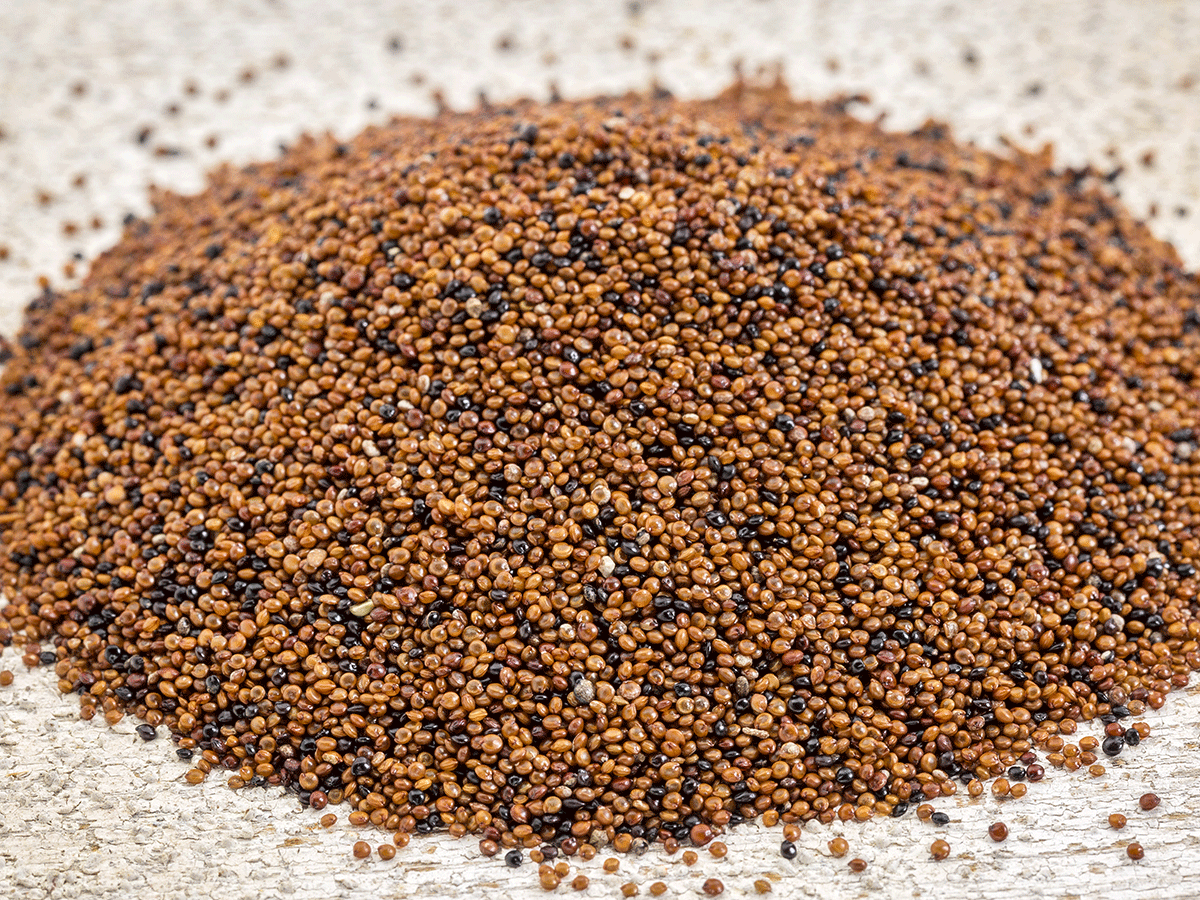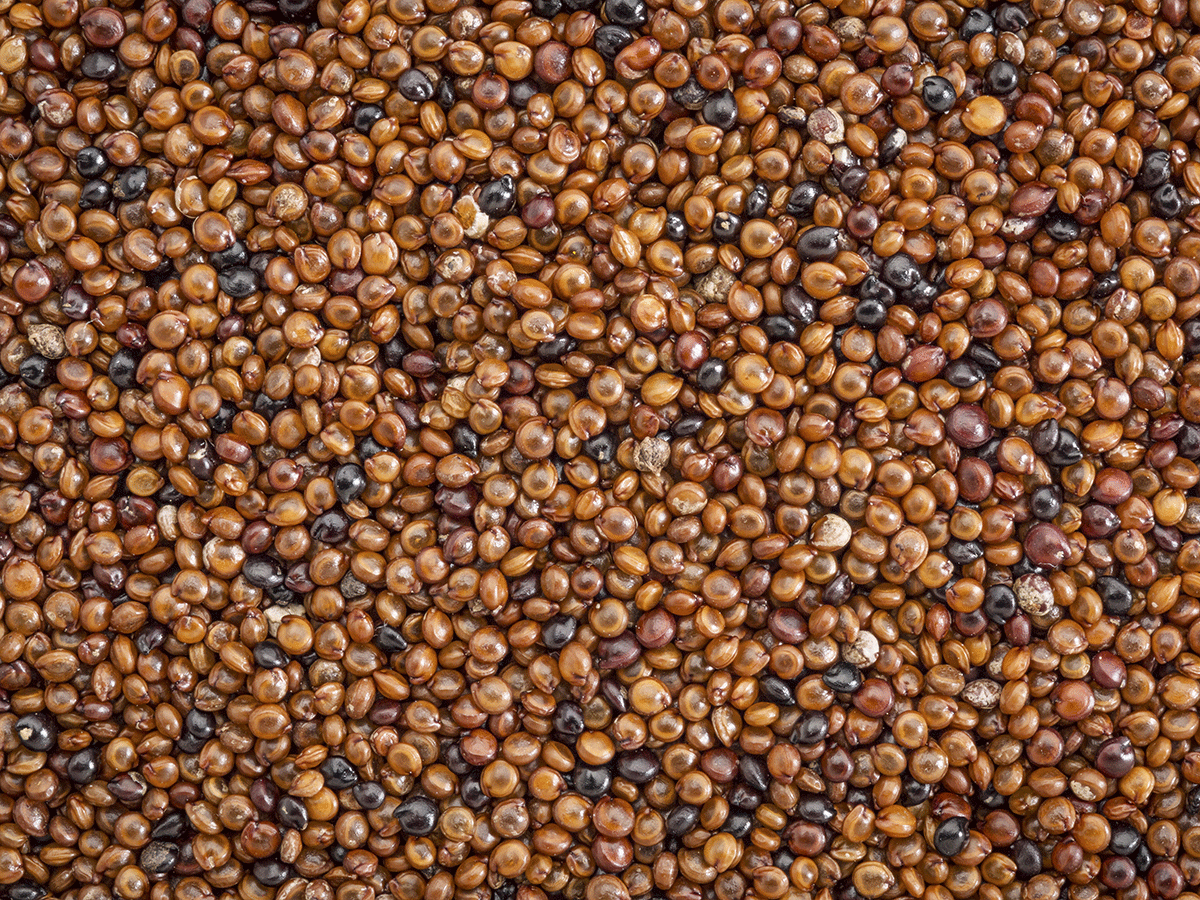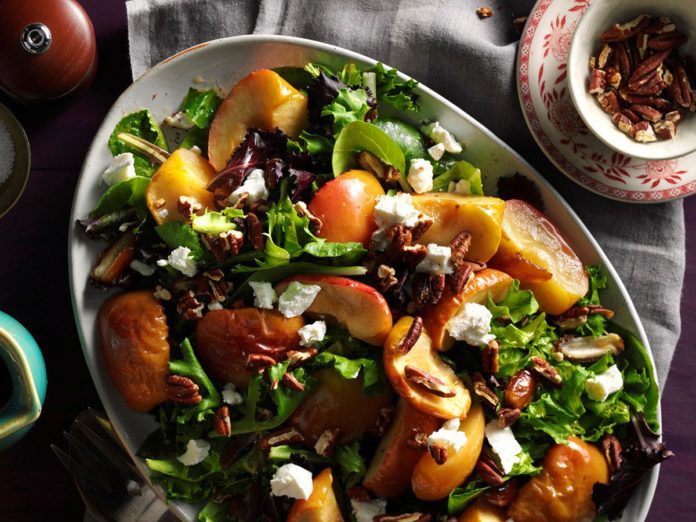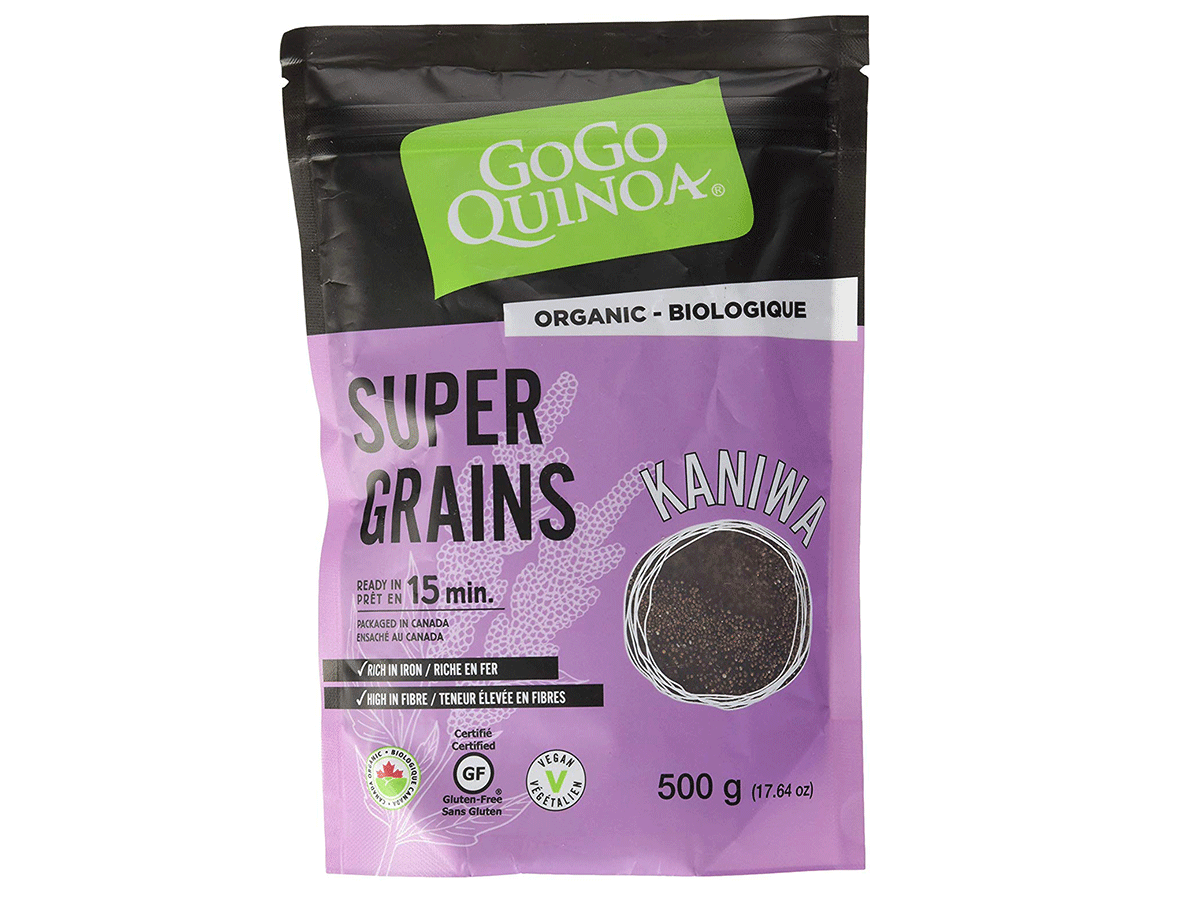
The goods
Kaniwa is not a misspelled phonetic version of quinoa. Kaniwa is pronounced “ka-nee-wa,” but it can also be called “qañiwa,” “qañawa” and “qañawi.” I know everyone likes to proclaim everything as the new quinoa, but kaniwa has real seed cred on this front (see what I did there?). Kaniwa is actually of the same genus as quinoa and is often referred to as “little quinoa” because that’s exactly what it looks like.
Being small myself, I know what it feels like to be called the “little Meghan” and, well, I wouldn’t wish that on anyone or anything. It’s time for kaniwa to stand tall and proud and have her day in the spotlight. Kaniwa is the seed of the goosefoot plant and is primarily grown in Peru and Bolivia. Slowly but surely, it’s making itself known up here and is well worth trying.

The boost
Kaniwa has a relatively high amount of protein, with seven grams per one-quarter cup of dry grains. (See other plant-based sources of protein.) It’s also a very rich plant-based source of iron (like these foods), with that same one-quarter cup offering 60 percent of your recommended daily intake.
Gram for gram, kaniwa has a greater nutrient density than quinoa and cooks up quicker. Unlike quinoa, which has a bitter, soapy (the herbal term is “saponin”) coating and requires a lot of rinsing and soaking, kaniwa doesn’t have this coating. It’s always great to soak grains and seed-like grains before cooking to promote better digestibility, but in a pinch, you can give kaniwa a quick rinse and it’s ready for cooking.
While quinoa will become softer and fluffy when cooked (I might call it mushy), kaniwa will maintain some of its crunch. It has integrity built into its awesomeness.

The plan
Where do we begin on this kaniwa adventure? You’ll cook kaniwa in one part grains to two parts water and simmer, uncovered, for 15 to 20 minutes.
Since kinawa has a bit of crunch, it’s great to use it in a salad that combines raw and cooked veggies (like our Pumpkin Salad or Roasted Apple Salad). Toss it with raw red pepper, cucumber, cooked beans and roasted sweet potato and you’ll have something delicious with a great mix of textures. You could also enjoy it as a stand-alone salad, with a sprinkling of fresh herbs and sea salt and a drizzle of olive oil and lemon juice.
Adding it to soups to bulk them up is a nice way to transform a soup into a meal. My favourite way to enjoy kaniwa is as a kind of porridge. Cook it as per instructions above, add cinnamon, nutmeg, almond milk and shredded apple, then cook it for 10 minutes longer. Since you’ve been reading my column for ages, you know how awesome ghee and coconut butter are, so I’d recommend adding a generous scoop of either ingredient to fill out your breakfast bowl, too.

The source
Kaniwa isn’t quite as widely available in Canada as quinoa yet, but there are a few brands that offer it here now. GoGo Quinoa is one option. I also love ordering grains, along with nuts, seeds, flours and dried fruits, from Organic Matters (omfoods.com), which is a BC-based wholesaler of fresh, mostly organic dry goods at amazing prices.
GoGo Quinoa Grains-Kaniwa, $10, amazon.ca
Meghan Telpner is a nutritionist and an author. Follow her on Instagram @meghantelpner. Get certified as a culinary nutrition expert with Meghan at the Academy of Culinary Nutrition.
Next, learn about the nutrient-packed seed that’s worthy of replacing your everyday grains.
